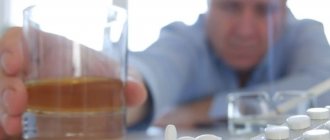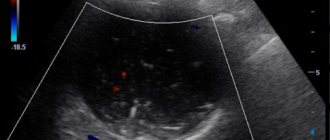- Home /
- Blog /
- Notes of the head physician
April 19, 2021
In recent years, it has been fashionable to focus on a healthy lifestyle. People have become especially interested in what they eat and how eating habits affect their bodies. “Horror stories” have appeared about intolerance to dairy and cereals, which contain lactose and gluten. The opinion has gained popularity that such products should be excluded from the diet.
We have already discussed myths and truths about gluten. This time, the issue of lactose intolerance in adults came under close attention: what are the symptoms of the disease, where does it come from and what tests to take to accurately find out the diagnosis. About all this in our article.
Symptoms of lactose intolerance in adults
If there is not enough lactase in the small intestine, then lactose is sent to the body in broken down form. As a result, within 20-30 minutes after consuming dairy products a person may have:
- bloating,
- diarrhea,
- pain in the intestines,
- nausea,
- rumbling,
- weakness,
- dizziness.
This is how lactose intolerance manifests itself in adults. This disease is also called “lactase deficiency” (LD).
Don't confuse allergies and intolerances
A milk allergy occurs when the immune system begins to produce specific antibodies against milk proteins entering the body. The immune system mistakes them for enemies and fights them. This occurs due to insufficiently active enzymes and the body's inability to digest (absorb) milk sugar (lactose). As a result, large, underdigested milk proteins (especially casein) are perceived by our immune system as parasites or worms. And then it begins to produce antihelminthic antibodies. It is these antibodies that cause allergies.
In children, allergies manifest themselves in the form of redness on the cheeks and on the folds of the arms. Severe itching occurs. The same reactions can occur on the mucous membrane of the gastrointestinal tract, that is, an immunological reaction begins there that damages the mucous membrane.
Why is there not enough lactase in the intestines?
All people have a huge amount of lactase at birth. This is how nature took care of man so that he could survive. Babies feed on their mother's milk and need this enzyme to digest their main food.
There are three types of lactose intolerance in adults.
- Alactasia . Congenital lactase deficiency is extremely rare. This is an inherited autoimmune disease. On Earth, such people can be counted on one hand. Previously, babies with congenital lactase deficiency died, but now, thanks to progress, lactose-free formulas have appeared.
- Secondary hypolactasia. Temporary lactase deficiency occurs after intestinal infections, injuries, and operations on the small intestine. In this case, there is no need to take special actions; you should wait out this period and the enzyme production will normalize.
- Primary hypolactasia. This type of lactase deficiency or lactose intolerance in adults occurs in people who, like everyone else, have a large amount of the enzyme at birth, but it decreases with age. This is genetically determined. Depending on the region of residence, the switching age may be different.
Lactose intolerance in adults is a feature which you can fully live. For more serious diseases, there are special treatment programs at the Mashuk Aqua-Therm sanatorium.
Some scientific terms
Primary hypolactasia is associated with an age-related decrease in enzyme synthesis, that is, older people may be less able to tolerate milk and products made from it. It’s not surprising: breastfeeding is far behind us, and new, varied foods have appeared in the diet. Other digestive enzymes become more in demand, and lactase production decreases.
Congenital lactase deficiency is a rare genetic disease in which a person does not produce lactase at all.
Secondary hypolactasia occurs after infectious diseases of the small intestine. Over time, the intestines' ability to synthesize lactase is restored.
How to replace products with lactose?
Lactose is found in all dairy products, plus some confectionery products, instant foods, meat, tablets, and dietary supplements. Pay attention to the ingredients.
For people intolerant, lactose-free or plant-based milk is suitable. Or fermented milk products, in which lactose has already been broken down by lactic acid bacteria, so kefir, yogurt, fermented baked milk, as well as butter and cheese do not give an uncomfortable effect.
Lactase enzyme is sold in tablets or capsules. You can drink it before drinking milk. This method should not be used without consulting a doctor.
Milk does not need advertising!
But, nevertheless, let's try again to talk about the benefits of dairy products. First of all, they are a source of calcium (Ca) and fat-soluble vitamin D. The vitamin is “responsible” for the absorption of calcium in the intestines and its integration into the bone skeleton, that is, it ensures bone strength, and calcium is necessary for the functioning of muscles, the nervous system, the heart and blood vessels , immunity, blood clotting.
A glass of milk a day provides the daily requirement of vitamin D and calcium for children and adolescents!
Now on store shelves there is a sufficient amount of dairy products with low lactose content - cheeses, cottage cheese, yoghurts, milk. In such dairy products, the complex carbohydrate lactose has already been broken down into simple carbohydrates, so they do not cause symptoms of milk intolerance.
How to determine lactase deficiency?
Whether there is lactase in the body or not is determined by a biopsy of the small intestine, but this route is rarely used. For example, during operations.
Other methods are stool carbohydrate and stool pH tests and the hydrogen breath test. Because hydrogen content increases in adults with lactose intolerance, these quantitative changes can be measured and the presence of deficiency can be determined.
Interesting fact. In China, lactose intolerance in adults is observed in 90% of the population, since they do not drink animal milk at all, but prefer plant milk: soy, almond, etc. This is due to the region of residence and diet: the Chinese love rice, seafood and fish, and from there they get all the necessary substances. Therefore, if you have been diagnosed with lactose intolerance, do not despair and look for an alternative!
Diagnosis of inability to digest lactose
The fact that a person cannot digest milk sugar can be guessed from the symptoms, but in order to confirm the diagnosis, a certain examination is required. The easiest and fastest way is by measuring blood sugar.
First, you need to find out your fasting glucose level. Then they load the intestines with lactose, at the rate of 1 g per 1 kg of the patient’s weight. An hour later, a repeat blood test is performed to determine the sugar content, and if its amount increases by 20% compared to the initial state, we are not talking about lactase deficiency.
Properties of lactose monohydrate
The substance is a white or creamy crystalline powder with a sweetish taste and odorless. It has the following physical and chemical properties:
- melting point is more than 202 °C;
- easily soluble in water, slightly soluble in alcohol;
- boiling with the addition of acids gives a hydrolysis reaction;
- when interacting with an alkali solution, it is oxidized to form saccharin acids.
From the point of view of industrial use, the following properties of lactose monohydrate can be distinguished:
- is a natural preservative;
- increases nutritional value and nutritional value of products;
- has low hygroscopicity, and therefore does not change properties under the influence of humidity;
- well compatible with active ingredients of drugs;
- has low production cost;
- It is capable of retaining odors, thanks to which it serves as the basis for flavoring and aromatic additives to food.
The process of obtaining a substance
Lactose monohydrate is obtained by evaporation from whey. To do this, the milk sugar contained in it is exposed to low temperature until crystals form, and then the remaining moisture is evaporated. The resulting raw material is sent to a roller or spray unit, processed until a powder is formed.
Reference
There are two forms of lactose in milk with different chemical structures - alpha and beta lactose. Only alpha-lactose is suitable for producing lactose monohydrate.
What is lactose monohydrate
Lactose monohydrate is a substance obtained by adding a water molecule to the lactose molecule. It is an oligosaccharide, that is, a type of polymer carbohydrates that, during the process of hydrolysis, form several monosaccharide molecules. In the case of lactose, two monosaccharides are formed - glucose and galactose, so it is also classified as a disaccharide.
The source of lactose is milk and dairy products, which is why its other name is milk sugar.
Important!
The shelf life of anhydrous lactose is significantly shorter than that of a substance with an added water molecule. Therefore, the latter is specially added to lactose for longer storage.
Industries that use lactose monohydrate
The main areas where this substance is used are the pharmaceutical and food industries, as well as agriculture.
Use in pharmaceuticals
Lactose monohydrate is one of the most popular excipients, which is used in the production of drugs in the form of tablets, capsules and sachets. There are many options for its use in the pharmaceutical industry:
- used as a safe preservative that extends the shelf life of drugs;
- used as a filler for drugs due to its minimal effect on the action of the active substance;
- allows you to shape tablets due to their ability to be easily pressed;
- creates a nutrient medium for beneficial bacteria contained in a number of preparations;
- used as part of medications against intestinal disorders.
Use in the food industry
Lactose monohydrate is used in the production of a wide range of food products:
- Baby food. Thus, in milk formulas, lactose occupies up to 85% of the composition.
- Bread and pastries. Milk sugar is included in the recipe of baked goods because it adds fluffiness and forms a golden crust on the surface.
- Semi-finished meat products (sausages, sausages, etc.). In these products, lactose is used to remove bitterness and also as a stabilizer and preservative.
- Confectionery products (jelly, marmalade, candy, etc.). Using milk sugar as a sweetener can reduce the calorie content of these products and make them accessible to diabetics.
- Alcoholic drinks. Lactose makes their taste less harsh and smoothes out the negative effects of ethyl alcohol.
- Sauces, instant soups and cereals, canned food, etc.
Application in agriculture
Milk sugar is used in the production of animal feed and biologically active additives to accelerate the growth of animals. Its inclusion in the diet of cows can increase milk yield and improve the quality of milk.
Valio initiatives
Valio in Russia represents centuries-old Finnish experience and unique developments for the well-being of Russian consumers. The company strives to develop public knowledge about the problem of lactose intolerance, therefore it is introducing a number of initiatives aimed at maintaining awareness of both adults and children, considering this important and significant not only in Finland, but also in Russia. The company also strives to communicate how to approach the issue of lactose intolerance from a scientific point of view.
Thus, together with the St. Petersburg branch of the Union of Pediatricians of Russia, there was the first study on the current problem of lactase deficiency among school-age children in Russia, which helped to find out the main causes of intolerance to dairy products, the proportion of the child population of the Leningrad region and St. Petersburg with the existing problem and the level of awareness about correct nutrition in these cases, which does not exclude dairy products, but corrects the diet with the help of specialized food products.
Valio currently supports projects to popularize the topic and works closely with Russian organizations in the field of nutrition. For example, together with the Union of Pediatricians, schools for expectant mothers, scientific conferences and seminars were organized.
Valio lactose-free milk is a unique product, the lactose content of which is less than 0.01%, which makes the product suitable for all consumers - including those who are completely lactose intolerant. Also, starting from 2022, Valio in Russia will present a unique range of Finnish lactose-free ice cream.









